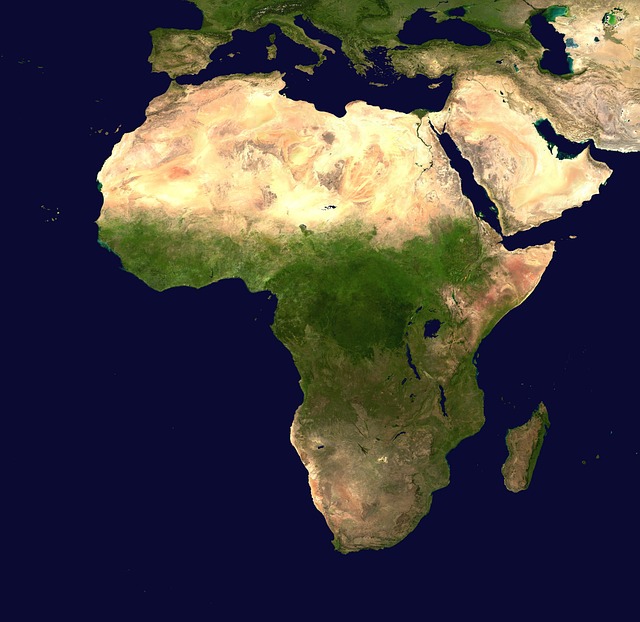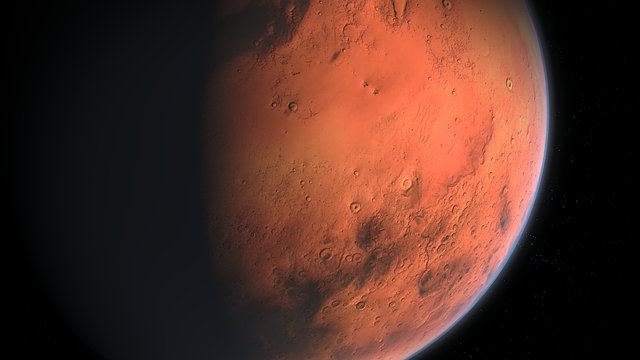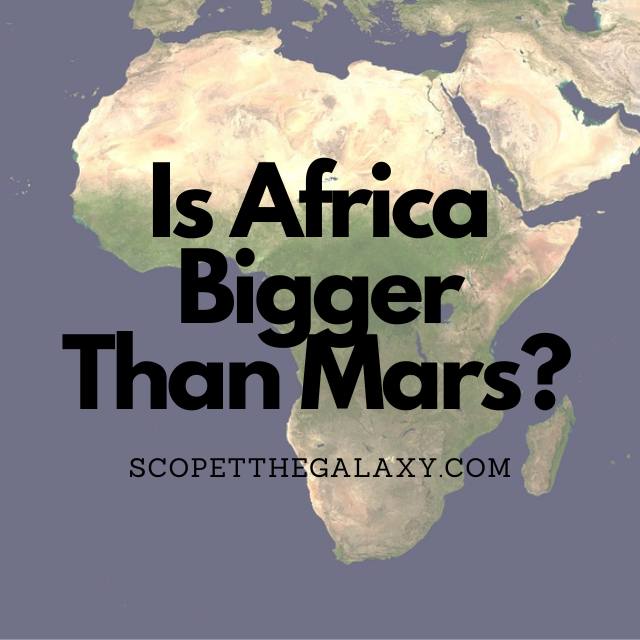*This post may contain affiliate links. This means we may make a commission if you purchase an item using one of our links*
Africa is the second largest of all Earth’s continents, while Mars is the second smallest planet in the solar system. Still, there’s no comparison regarding which one is bigger as Africa is a flat land mass with a surface area of 30.3 million square kilometers and a volume of 1.12 cubic kilometeres while Mars is a spherical planet with a surface area of 144.8 million square kilometeres and a volume of 163 billion cubic kilometers.
Discover why, in some instances, we could say that Africa “is bigger” than Mars, plus the facts and statistics that give us an actual perspective of these masses.
How Big Is The Continent Africa?
Table of Contents

Africa is the Earth’s second largest continent covering a total area of approximately 30.3 million square kilometers, equal to about 20% of Earth’s total land mass or 6% of the planet’s surface area. Africa possesses the world’s largest desert, plus it has the longest river of any continent, the Nile.
Africa is the second highest popululated continent on Earth. The continent has 54 countries, including Egypt, Nigeria, and Kenya, and it accounts for roughly 17% of the world’s population, with more than 1.4 billion people.
There are eight main physical regions of Africa: the Sahara, the savanna, the rainforest, the Great Lakes, the Sahel, the Ethiopian Highlands, the Swahili Coast, and southern Africa. The Sahara Desert extends over the northern third of Africa and is one of the most inhospitable places on Earth. Its size is 9.2 million square kilometers – roughly the same size as the entire United States.
The African savannah is a vast grassland that covers most of the African continent (around 65%). It extends from the Red Sea at the east to the Atlantic Ocean in the west and from Senegal in the north to Sudan in the south.
A savannah is a type of landscape that consists of grasslands with few trees, bushes, or shrubs. The grasses are typically short but can grow up to almost four meters tall. The dominant vegetation is acacia and baobab trees, which provide shade and shelter for animals during daytime hours.
Africa possesses some of the world’s highest mountains; Mount Kilimanjaro is the tallest, which rises 19,341 feet from its base near the equator to its peak in Tanzania. Africa extends to a length of 8,000km between its northern and southern extremities in Tunisia and South Africa; its width of 7,400km stretches from Xaafuun Point in Somalia to Almadi Point in Senegal.
The thickness of Earth’s crust ranges from 5 to 70km and is generally thicker under continental land where it averages 40km. Taking this figure and multiplying it by Africa’s surface area, we can calculate the rough volume of the continent at 1.21 billion cubic kilometers. This might sound like a sizable volume, but it’s no match for the 163 billion cubic kilometers of Mars’ volume.
How Big Is The Planet Mars?

Mars is the fourth planet in line from the Sun and the second smallest planet in our solar system. It has a diameter of 6,779 km, which is only just over half as large as Earth’s (around 53%)
The physical geography of Mars is very different from that of Earth. The atmosphere on Mars is much thinner than ours, and it consists mainly of carbon dioxide (CO2) with small amounts of nitrogen (N2). The surface gravity on Mars is much lower than that on Earth, so an object that weighs 100 pounds on Earth, would weigh just 38 pounds on the red planet.
The surface of Mars is mainly composed of various minerals like iron oxide and silicon dioxide. It also has polar ice caps, but it doesn’t have any oceans or seas.
Olympus Mons is the largest volcano on Mars, with a diameter of 600km. And it is the largest mountain in our solar system, standing at roughly 27km high (almost three times the height of Mount Everest)
The Valles Marineris system of valleys is a vast network of canyons on Mars;the largest canyon in the solar system. It is located in the planet’s southern hemisphere and extends for around 4000 kilometers from east to west; the deepest points can extend up to 10km.
The basic makeup of Earth and Mars is similar as they are both terrestrial planets with a dense metallic core and overlying crust and mantle. However, Earth’s density (5.514g per cubic cm) is higher than Mars’ density (3.93g per cubic cm), suggesting that the red planet’s core contains lighter elements than Earth’s.
The surface area of Mars is around 144.8 million sq. km, about 4.8 times the surface area of the African continent. Meanwhile, the volume of Mars is approximately 163 billion cubic kilometers, roughly 50 times that of Africa.
Summary
If we compare the diameter of Mars to the width of Africa, we see that the red planet falls short by over 500km. Still, while this helps us to visualize the width of Mars, it doesn’t represent the true size. While Africa is a flat bed of land, Mars is a spherical planet, and that makes all the difference.
This means that the surface area of Mars is almost five times as vast as that of the African continent, and the volume is up to 50 times as great.
References
Africa – Wikipedia
Africa: Physical Geography | National Geographic Society
10 Facts About the African Savanna – MyStart
Mars Surface – Universe Today
How Big is Mars? | Size of Planet Mars | Space

